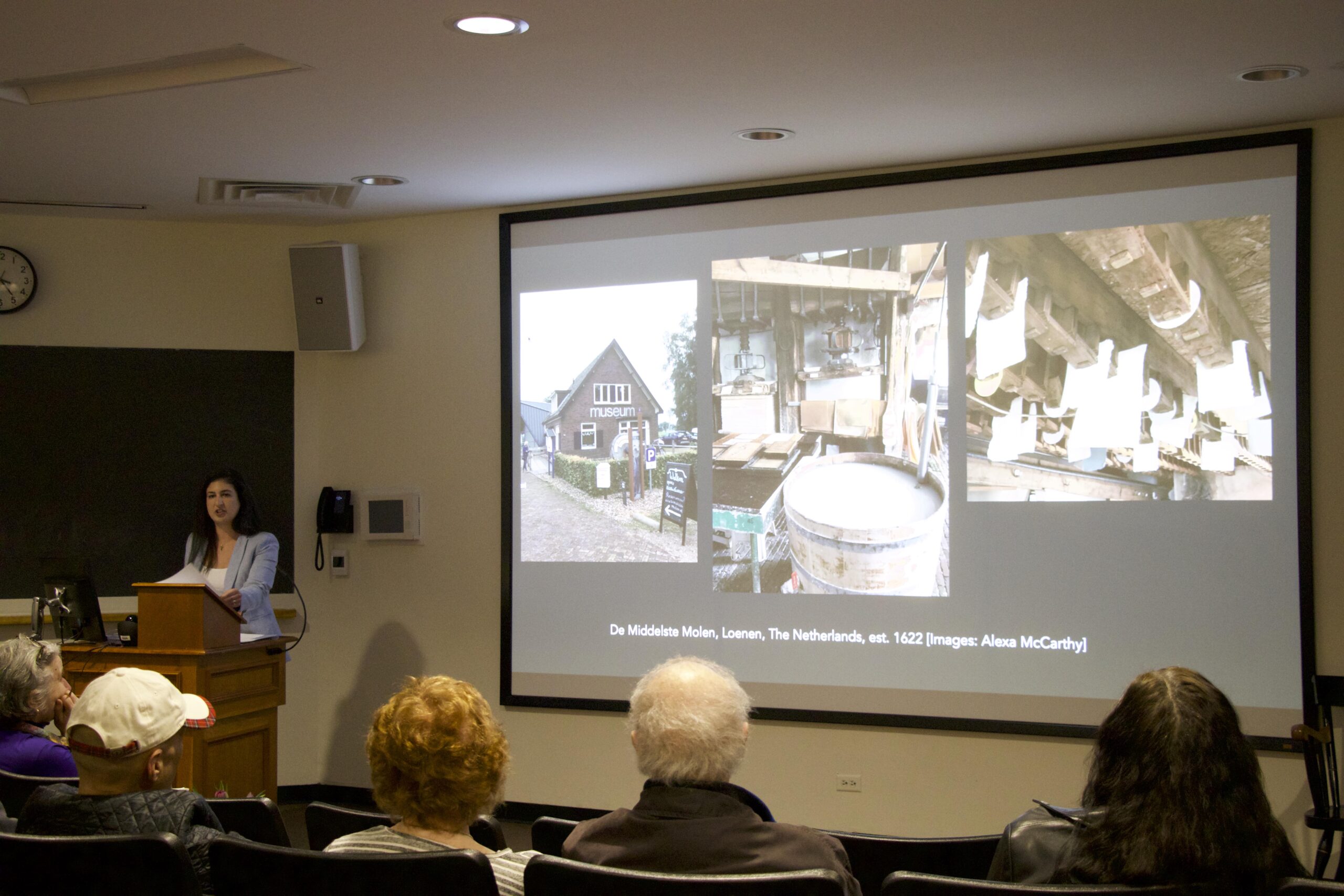“A multifaceted material”: Alexa McCarthy ’09 discusses blue paper in 16th and 17th century art
April 21, 2023
 Andrew Yuan
Andrew YuanOn Monday afternoon, Alexa McCarthy ’09 returned to Bowdoin to speak about her research on handmade blue paper in the Baroque period in a talk sponsored by the Department of Art History and the Bowdoin College Museum of Art (BCMA). Beginning in the mid-15th century in Amsterdam and Venice, artists began to produce drawings on paper dyed with indigo, introducing a new type of composition to the Baroque art world.
“The use of blue papers for drawings and figural compositions transcends spatial and temporal boundaries, connecting artists working in both Southern and Northern Europe,” McCarthy said. “For many of these drawings, the tonality of the blue paper informs the effects of light and shade, capturing the temporality of a fleeting moment in time.”
Though blue paper appears frequently in international museum collections, its historical scholarship is limited. McCarthy’s doctoral research at the University of St. Andrews, completed last year, represents the first large-scale study of blue paper. She recapped her findings to the Bowdoin community in her talk.
“It was very interesting [to hear about] the materials people used during the Baroque [period], especially how it’s still preserved and [McCarthy’s] techniques for identifying blue paper,” Emma Akuyeva ’25 said.
McCarthy’s research involves technical analysis to identify drawings that were once on blue paper.
“Examining the sheet under a microscope shows the presence of these [blue] fibers, but when seen with the naked eye, the sheet appears brownish,” McCarthy said. “Technical analysis is often required to understand the original qualities of the paper.”
Frank Goodyear, co-director of the BCMA, hopes to work with McCarthy to identify pieces in the Museum’s collection that may have been done on blue paper.
“[McCarthy] is using new, digital tools to look deeply into the paper itself to understand how it was made and how it’s aged. I think that some of the coloring is quite fugitive and will fade over time,” Goodyear said. “There may be works [in the BCMA collection] that were originally blue, and it would be exciting to get Alexa back in here to look at our drawings.”
McCarthy showed the audience photographs of chalk drawings done on blue paper. Notably, she spoke about a rare depiction of a Black female model from the seventeenth century—a Jacob Backer drawing in black and white chalk on blue paper.
“Backer carefully rendered the flesh tones, the modulation of black and white chalks on blue paper.… The shading of the figures of the body is meticulous, the outer portion of her right arm is carefully modeled with blended black and white chalks,” McCarthy said. “Blue paper serves as a middle tone, an ideal surface through which to capture the complexities of the human body through the modulation of light and dark drawing implements.”
Goodyear also emphasized McCarthy’s novel approach to the study of blue paper drawings and his excitement for future generations of art historians.
“I think it’s really exciting that a young scholar like Alexa is asking questions about these quite old drawings that scholars and curators have looked at for centuries. She’s unearthing a whole new way of thinking about them,” Goodyear said.

Comments
Before submitting a comment, please review our comment policy. Some key points from the policy: